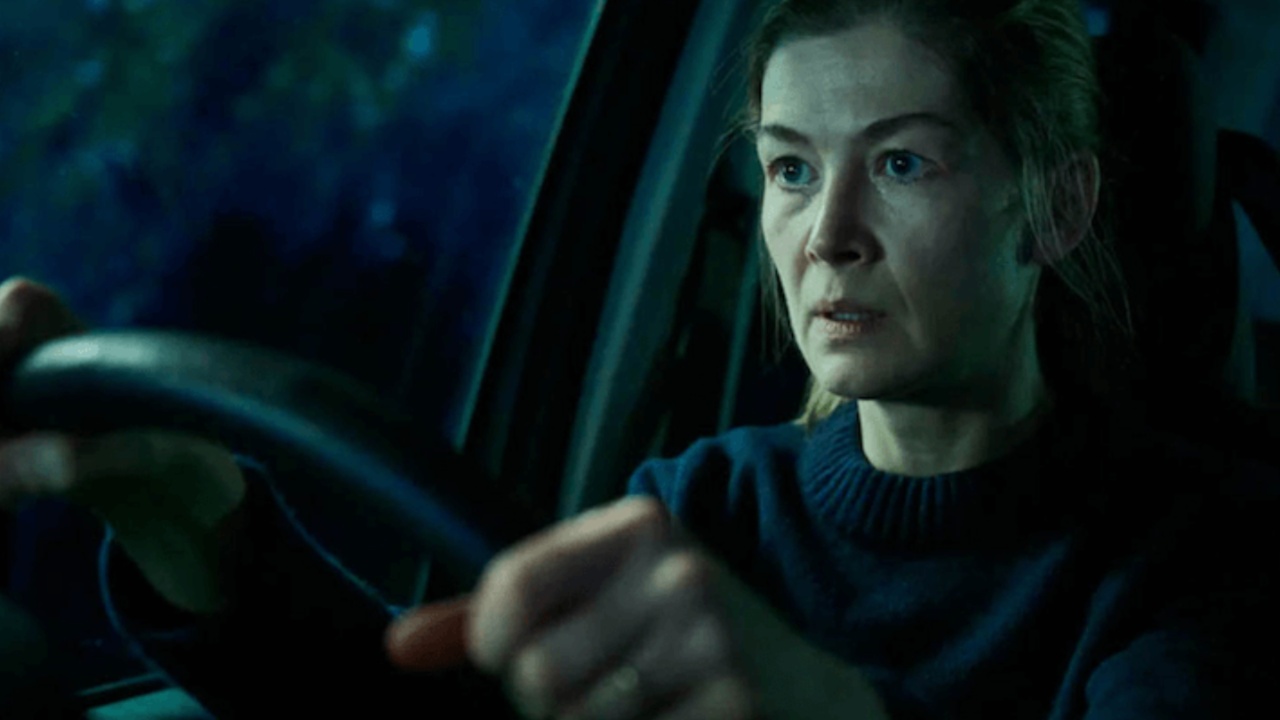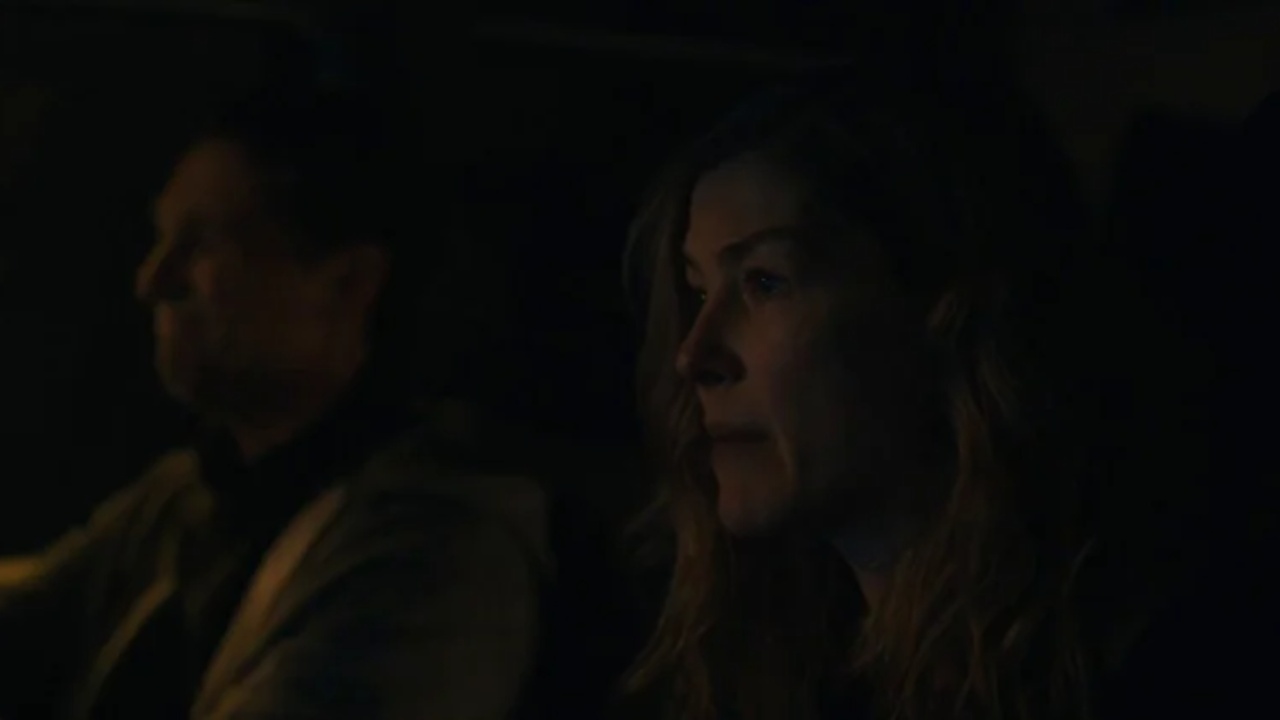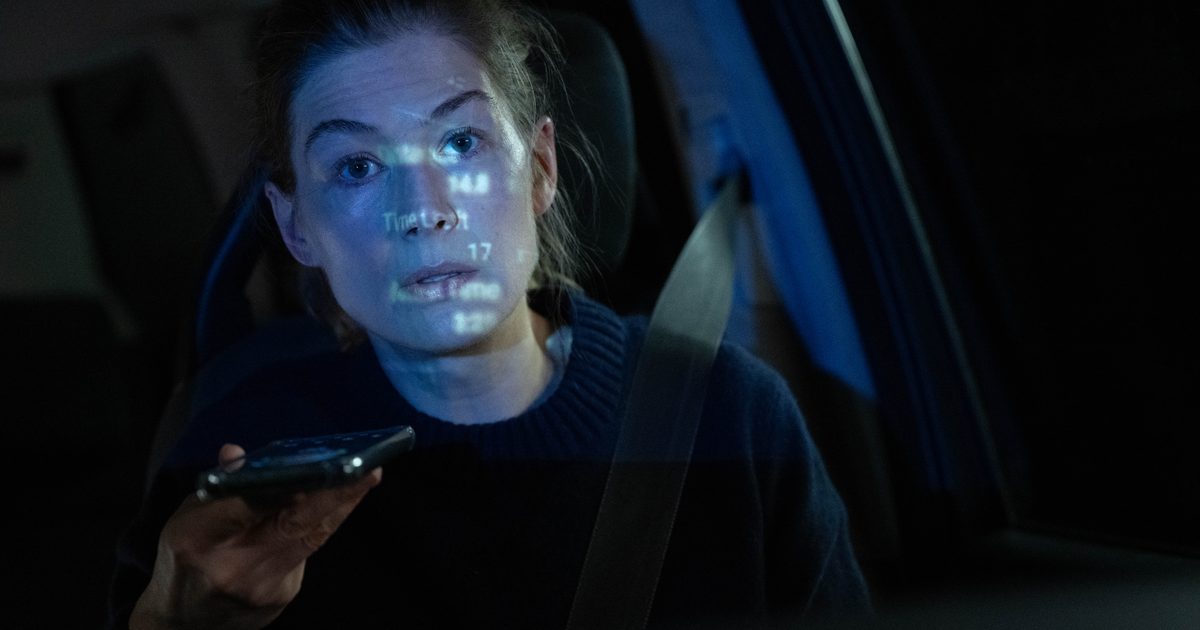Hallow Road (2025) is a horror film that blends metaphorical and supernatural storytelling, leaving viewers to question what is real and what exists only in the characters’ minds. The movie deliberately blurs the line between reality and imagination, challenging the audience to interpret events while exploring the psychological and emotional states of its protagonists.
On the surface, the story appears to depict a suspenseful accident and its aftermath, but underneath, it is a layered exploration of grief, guilt, and parental anxiety. The film’s narrative structure deliberately emphasizes ambiguity, offering both literal and symbolic interpretations that resonate with universal human fears.
The story opens in the quiet household of Madison and Frank, a married couple grappling with stress and unresolved conflicts. Their teenage daughter, Alice, has revealed that she is pregnant, which immediately ignites tension. The revelation acts as a catalyst, surfacing longstanding family anxieties and conflicts.
That night, Alice storms out, leaving her parents behind after a heated argument. Her departure sets the stage for the chain of events that follows, highlighting the fragile dynamics between parents and child. Alice’s choices, driven by fear, shame, and anger, mirror the pressures and limitations placed on young adults by parental expectations, making her eventual fate feel both tragic and inevitable.
As Alice drives through the woods, she believes she hits a young girl while under the influence of MDMA. Panic-stricken, she contacts her mother for guidance. Madison instructs her to perform CPR on the injured girl, creating an intense and emotionally fraught moment.
When Alice attempts resuscitation, the girl’s chest caves in a moment that amplifies the sense of horror and confusion. Shortly thereafter, Alice is struck by a car, leaving her dead for the remainder of the film. The movie deliberately keeps the exact sequence of these events ambiguous, emphasizing the trauma and shock experienced by her parents rather than the literal accident itself.

Parents’ Guilt And Panic Drive Hallucinations During Frantic Search For Alice
Upon learning of Alice’s accident, Madison and Frank set off to reach her location. The film depicts their frantic drive through the forest in near real-time, using the journey to illustrate their panic, guilt, and feelings of helplessness. Throughout this sequence, viewers witness the parents’ emotional unraveling as they imagine various catastrophic scenarios.
Their minds construct a series of escalating horrors, projecting their fears onto reality. The tension created during this journey underscores a central theme: the inability of parents to fully protect their children and the immense psychological weight carried when they fail or believe they have failed in that duty.
During Alice’s ordeal, she is in contact with a mysterious couple on the phone who appear to offer guidance and, at times, chastisement. Initially, this couple seems real, adding an element of supernatural suspense to the narrative. However, it is eventually revealed that they do not exist.
Instead, they are manifestations of the parents’ guilt and subconscious attempts to process the situation. The couple’s advice and interventions mirror the internalized conflict Madison and Frank experience as they reflect on their past parenting choices. This narrative device cleverly externalizes the characters’ psychological torment, making the audience question the reality of every interaction and encounter Alice experiences.
The film delves deeply into the theme of parental guilt, portraying how Madison and Frank’s past behaviors and decisions contribute to the unfolding tragedy. Both parents struggle with control and secrecy: Frank desires to be actively involved in guiding Alice, while Madison, harboring her own emotional struggles, has withheld information from him.
Their inability to act cohesively and provide balanced guidance creates an environment of confusion and tension for Alice. The hallucinated couple, the imagined accident details, and the parents’ reactions to the unfolding situation all serve as visual metaphors for the psychological weight of responsibility, emphasizing how internalized guilt can distort perception and amplify fear.

Psychological Trauma And Supernatural Folklore Shape Alice’s Fate In Hallow Road
The most plausible interpretation of the events focuses on a realistic sequence of tragedy: Alice dies in the initial accident, and everything that follows, including hallucinations, imagined phone calls, and perceived events, is a product of her parents’ trauma response. The narrative portrays the parents’ minds constructing alternate realities in which they attempt to mitigate their feelings of helplessness and responsibility.
These imagined scenarios reflect their deep emotional turmoil and are a visual exploration of the grief process. By depicting the psychological reactions in real-time, the film immerses viewers in the parents’ experience, showing how guilt and fear can transform perception, creating a world of imagined horrors as a coping mechanism.
In addition to the psychological interpretation, the film offers space for a supernatural reading rooted in Celtic folklore. Set on Halloween, All Hallows’ Eve, when the boundary between the human and spirit worlds is traditionally thin, Alice encounters strange phenomena that could be interpreted as mystical in origin.
From this perspective, Alice’s misadventures in the woods involve malicious spirits, changelings, and Will-O’-The-Wisps. The narrative incorporates folkloric elements such as enchanted trees and mischievous fairies, creating an alternative lens through which the events can be seen. This reading taps into cultural myths of spiritual interference, particularly around pregnant women, enhancing the tension and suspense while offering a fantastical explanation for Alice’s disappearance.
The supernatural interpretation posits that Alice strikes a changeling disguised as a girl, which causes her panic and propels her deeper into the forest. Fairies use Will-O’-The-Wisps to guide her, ultimately abducting her and leaving a changeling in her place.
This explanation integrates visual cues from the film, such as references to logs, wood, and mysterious lights, and aligns with traditional folklore, where fairies are known to kidnap humans, especially expectant mothers, to raise their own offspring. This reading offers a satisfying, imaginative alternative to the purely psychological explanation, highlighting the film’s dual narrative possibilities and demonstrating the richness of its storytelling.
Ultimately, Hallow Road functions on multiple levels. It serves as a psychological exploration of grief, guilt, and parental failure, while simultaneously allowing for supernatural interpretation through folklore and mystical elements. The story’s ambiguity challenges viewers to reflect on the boundaries between reality and perception, between literal events and emotional allegory.
Whether interpreted as a metaphor for parental anxiety or a genuine supernatural tale, the film is a haunting study of responsibility, loss, and the consequences of miscommunication. Its strength lies in balancing these interpretations, creating a suspenseful, emotionally resonant experience that lingers long after the final scene.



